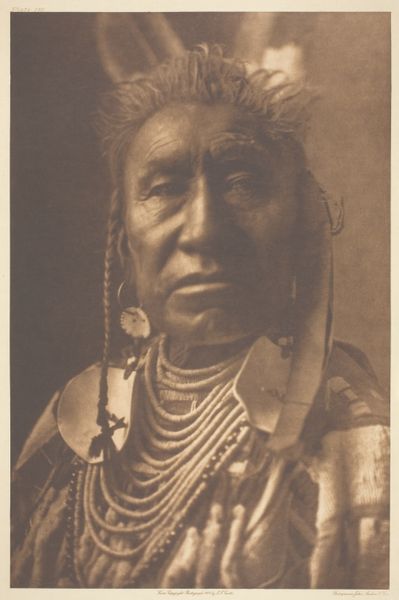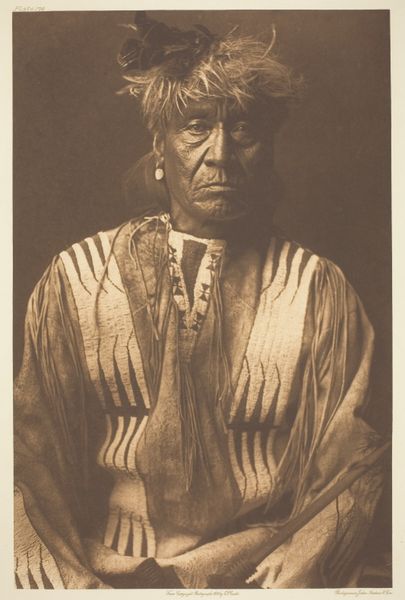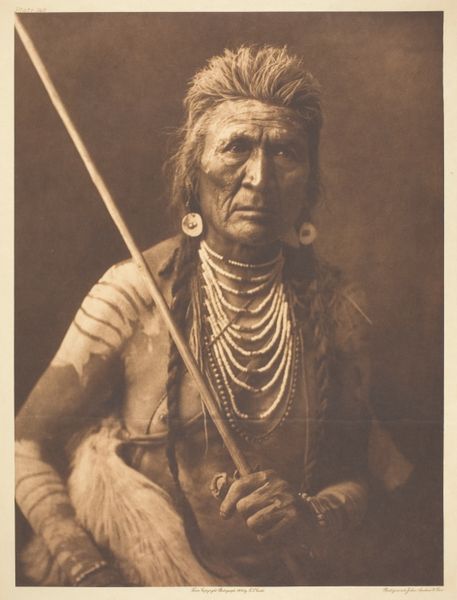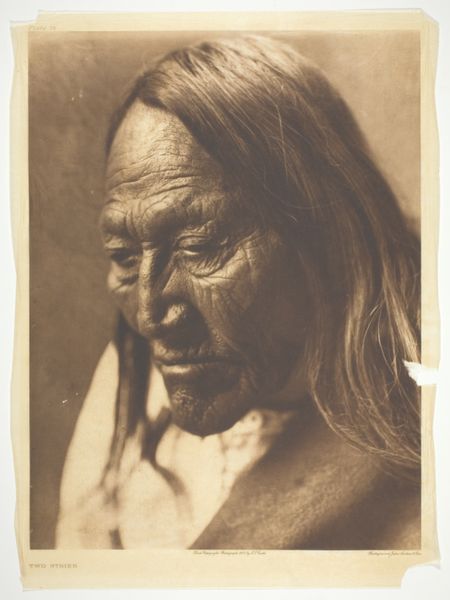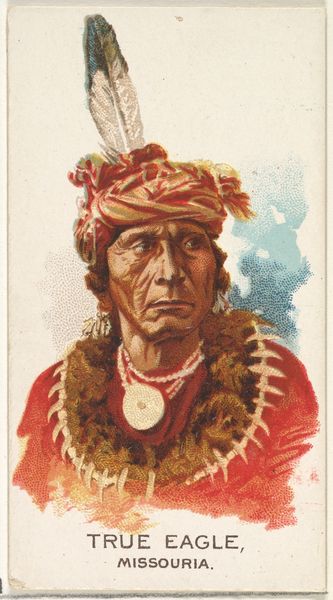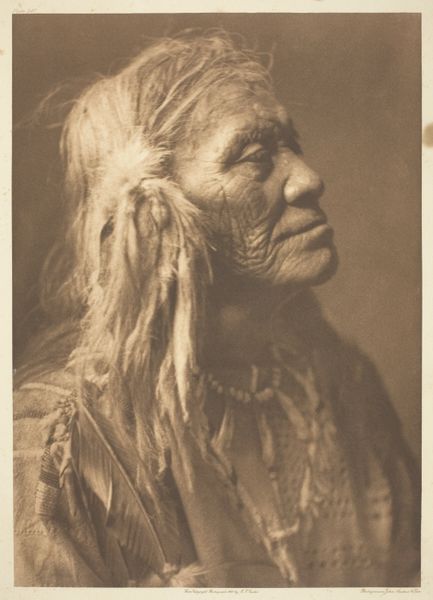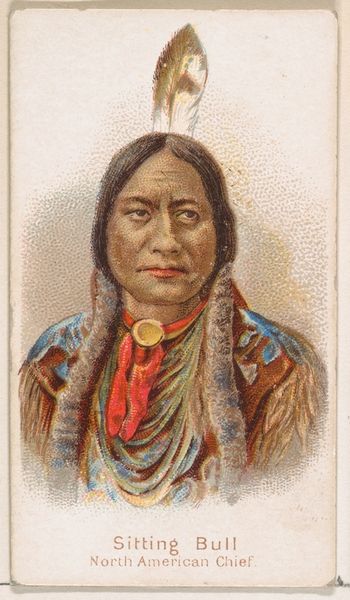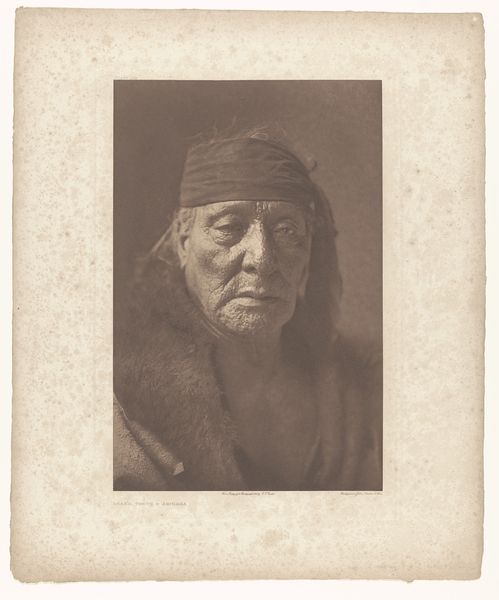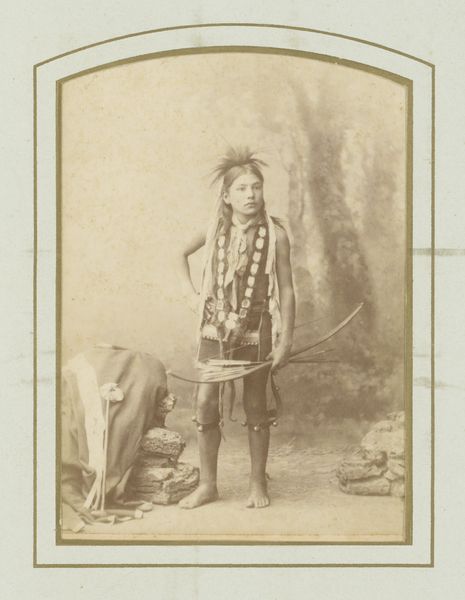
paper, photography
#
portrait
#
paper
#
photography
#
portrait art
Copyright: Public Domain
Curator: Look at the detail in this portrait! It is entitled "San Francisco_ Golden Gate Bridge before construction," though you see no bridge. Taken circa 1870 by Eadweard Muybridge, the albumen print on paper resides here at the Städel Museum. Editor: The tones are incredible—sepia and shadows, but a lightness around the face that is immediately engaging. What strikes me most is the detail in his face, the signs of a life lived outdoors perhaps. And look at the handcrafted beaded necklace. Curator: Yes, and if we look closer at the title's reference to a place, it brings forth the complicated history of photography’s use in constructing narratives around westward expansion and Indigenous people during the late 19th century. Consider that this was an era of intense anthropological study, often used to reinforce colonial ideologies. Muybridge himself isn’t outside of this context. Editor: Agreed, and knowing that an albumen print requires careful layering and manipulation, this highlights the labor invested in crafting this particular image. Who made it, and what were their motivations? It seems his intent may have been to capitalize on the demand for "exotic" images. But then the materiality— the care in the making of those beaded necklaces, the hand woven headband... Curator: Exactly! It becomes a point of tension—a portrait simultaneously reflecting ethnographic documentation and a nuanced depiction of individual dignity. It demands we consider how photography contributed to both erasure and a form of visibility, albeit filtered through a colonial lens. The image becomes a testament and perhaps resistance. The subject’s gaze seems both weary and strong. Editor: The interplay of intention and impact becomes clear. This is far more than just a straightforward "portrait"; it’s a carefully produced artifact reflecting complicated power dynamics. Thank you for contextualizing this further; it's so valuable when we understand it within its means of production. Curator: Thank you for making clear to me that his beaded work represents both tradition and, perhaps, individual craft choices in response to imposed representation. There are lessons to learn here.
Comments
No comments
Be the first to comment and join the conversation on the ultimate creative platform.
